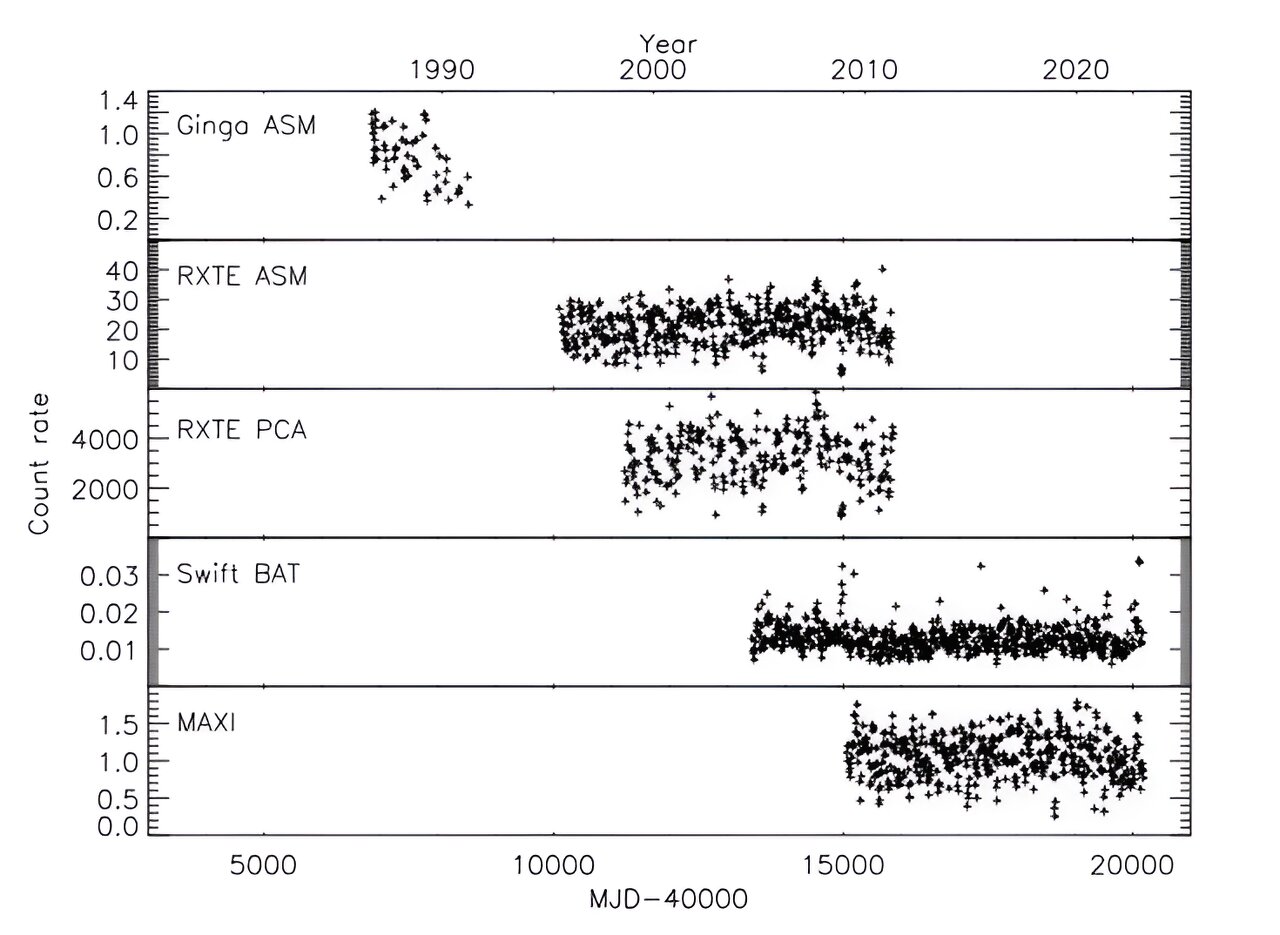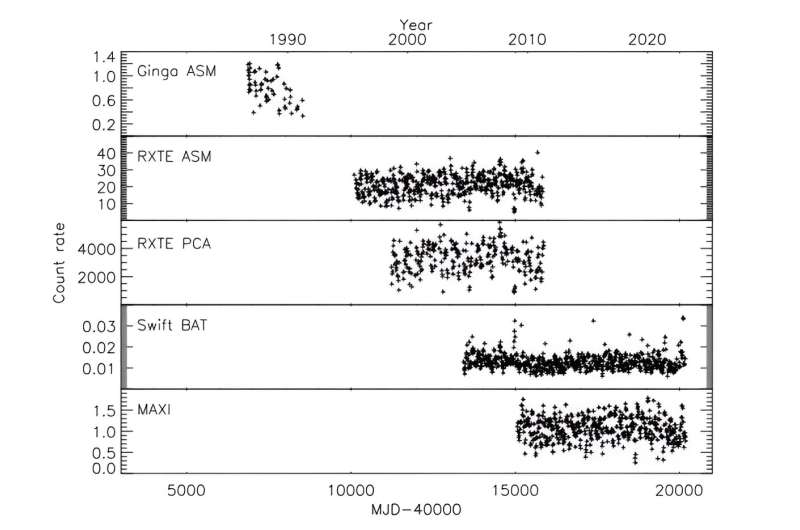

Astronomers from the National Central University in Taiwan have investigated an unusual superorbital period variation of an X-ray binary known as 4U 1820-30. Results of the study, published September 13 on the preprint server arXiv, could help us better understand the nature of this system.
X-ray binaries are composed of a normal star or a white dwarf transferring mass onto a compact neutron star or a black hole. Based on the mass of the companion star, astronomers divide them into low-mass X-ray binaries (LMXBs) and high-mass X-ray binaries (HMXBs).
4U 1820-30 is an ultra-compact LMXB located near the center of globular cluster NGC 6624. It consists of a neutron star and a mass-losing companion—a helium white dwarf with a mass of 0.06–0.08 solar masses. The system has an orbital period of approximately 685 seconds.
Previous observations of 4U 1820-30 have found that it exhibits not only orbital and superhump variations, but also a superorbital modulation with a period much longer than the orbital period. This period was measured to be approximately 171.03 days and appeared to be stable over the last decades.
However, now, a team of astronomers led by National Central University’s Yi Chou reports new findings regarding the superorbital period modulation of 4U 1820-30. By analyzing the available data from various telescopes since 1987, they detected a significant change in the superorbital period of 4U 1820-30.
According to the study, the power spectra obtained with five observing instruments show a significant change of the superorbital period from 171 to 167 days between 1987 and 2023. Further analysis suggests that this period may have experienced an abrupt change between late 2000 and early 2023 or changed smoothly with a period derivative of about -0.000358 days per day.
Previous observations of 4U 1820-30 suggested that its superorbital period modulation was caused by an undetected third companion star in the system. However, the new results obtained by Chou’s team disfavor this scenario, pointing to other hypotheses. Instead, they propose that the irradiation-induced mass transfer instability may be responsible for such behavior.
“The accretion stream is expected to flow from a small region around the L1 point on the companion, where the effective gravitational field is weak. Therefore, the accretion stream is highly sensitive to the X-ray irradiation onto this region,” the researchers explained.
The authors of the paper added that more observations and theoretical studies are required in order to verify this irradiation-induced mass transfer instability scenario for 4U 1820-30.
More information:
Yi Chou et al, The Puzzling Superorbital Period Variation of the Low-mass X-ray Binary 4U 1820-30, arXiv (2024). DOI: 10.48550/arxiv.2409.08451
Journal information:
arXiv
© 2024 Science X Network
Citation:
Study inspects unusual behavior of an X-ray binary (2024, September 24)
retrieved 24 September 2024
from https://phys.org/news/2024-09-unusual-behavior-ray-binary.html
This document is subject to copyright. Apart from any fair dealing for the purpose of private study or research, no
part may be reproduced without the written permission. The content is provided for information purposes only.